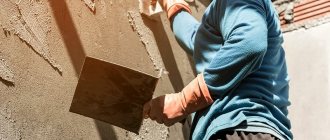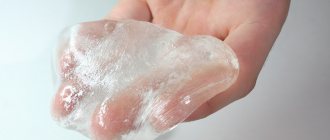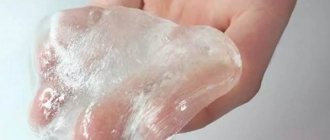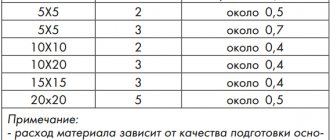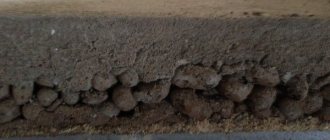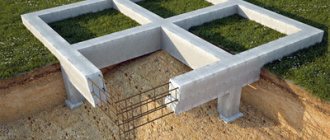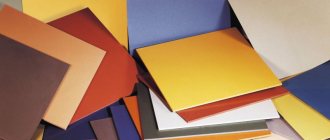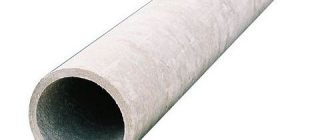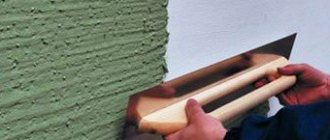Features of floor insulation with liquid glass
This material is an aqueous mixture of silicate salts. Almost all components are involved in its production, as in the process of making ordinary glass - sodium or potassium silicates. Therefore, this building material has two names.
Liquid glass is produced in two stages. First, by melting silica with soda and other alkaline components at high temperature, a special mass is obtained. After cooling on the conveyor, it bursts, forming a silicate block.
The resulting material is loaded into an autoclave, modifiers and water are added and dissolved in a high-pressure apparatus. The finished liquid glass is poured into containers and sent to the warehouse. In sealed packaging, the material is not afraid of numerous cycles of freezing and thawing.
Depending on the additives, liquid glass can be sodium or potassium. The presence of sodium in the mixture improves its adhesiveness, due to which sodium glass is successfully used for waterproofing building structures and as an antiseptic.
Thanks to the addition of potassium, liquid glass becomes resistant to chemical and atmospheric influences. Therefore, potassium glass is used as a special paint that does not produce glare on the treated surface when it dries.
Both types of liquid glass differ in density and specific gravity, which can be 1.3-1.55 kgf/m3. The density of sodium glass is in the range of 1.3-1.6 g/cm3, potassium solution - 1.25-1.4 g/m3.
Liquid glass has a certain viscosity and looks like ordinary office glue. When applied to a concrete or brick surface and subsequent hardening, it forms an impenetrable layer consisting of crystals that hermetically fill the cracks and pores of the base. To waterproof the floor, it is recommended to use a more viscous solution. Potassium glass has this characteristic.
Before treating the floor with liquid glass, you should pay attention to two important features of this material. The first feature is the service life of the silicate coating, which is set by liquid glass manufacturers for 5 years.
This indicator depends on the tendency of the material to destruction, which is expressed by the loss of 1 mm of waterproofing thickness in one year. The durability of the coating can be increased by using additional floor protection systems or special paints.
The second feature is the fairly rapid crystallization of the mixture within half an hour after preparation. This means one thing: the floor should be treated quickly, using small portions of liquid glass and following the rules for working with it.
Tips for applying liquid glass are as follows:
- It is unacceptable to mix liquid glass directly with ready-made cement-sand mortar. You can only add its aqueous solution, subject to a certain ratio of components.
- The operating temperature of the waterproofing material should not be below +5 and above +30 degrees.
- To prepare the primer solution, the ratio of glass and cement is 1:1.
- To impregnate wood, silicate material is diluted with water in a ratio of 1:2.5.
- Waterproofing based on liquid glass penetrates the surface of the concrete floor by 2-3 mm. When applied in several layers, the depth of impregnation can be increased to 20 mm.
The cost of the material depends on its characteristics and starts from 200 rubles. for 10 kg.
Characteristics
There is a whole list of advantages of this material. The list includes:
- Hydrophobicity. After hardening, it is not afraid of water. Therefore, the treated surfaces are not susceptible to moisture, corrosion, or rotting.
- Antistatic. Being solid it does not become electrified. If you apply the mixture to the surface of the part, it will acquire antistatic properties.
- Thermal insulation. Low thermal conductivity is the reason for the unique property of retaining heat. Therefore, liquid glass is often added to the mortar (masonry, for screed).
- Fire resistance. This is the ability to neutralize the effects of high temperatures. The material itself does not burn, is non-toxic, chemically neutral, and environmentally friendly.
- Antiseptic. It is truly antiseptic. In a liquid state, the mixture kills parasites and prevents them from appearing during the life of the structure.
Among the areas of use of liquid glass, application in construction and industry is determined by the ability to fill unwanted voids. Sinks, cracks, sinuses filled with silicate do not increase over time, do not accumulate water, and as a result, the monolith retains its frost resistance when it comes to a concrete surface.
ZhS is a material of a viscous, viscous consistency, which dries quickly in air and forms a monolithic, durable, water-impervious base.
Liquid glass, sodium and potassium, have the following characteristics:
- Prevents water from penetrating through the surface treated with the solution.
- Protects wooden and concrete surfaces from the penetration of fungus and pathogens.
- Prevents the accumulation of static voltage.
- Protects the treated surface from fire.
- Protects the base impregnated with the solution from the effects of acidic compounds.
- Helps accelerate the drying process and strength gain of cement mortars.
The composition of liquid glass, when connecting surfaces, penetrates into the structure, releases moisture and increases density and viscosity due to adhesion. Therefore, the main property of the composition, due to which it has become widespread, is its effective adhesive ability.
When processing planes or adding silicate to compositions, it exhibits properties: water-repellent, antiseptic - it prevents bacteria and fungi from multiplying, relieves static stress, increases the density of the plane, penetrating its structure, its refractoriness and protects against the effects of acids.
Types of liquid glass
Now they are creating compositions from silicas with a saturated sodium hydroxide substance using an apparatus for heating under pressure above atmospheric. Under such conditions, the reaction accelerates and the product yield increases.
In the traditional production of liquid glass, silicon is directly dissolved in an alkaline solution.
Technologies provide for the production of the following types of glass:
- Sodium liquid glass is a solution with increased strength and adhesion to minerals of different textures. Produced on the basis of sodium salt. Does not deform, is resistant to fire and overheating.
- Potassium - created from potassium salts, has a loose texture and an increased ability to absorb water vapor from the air. Glare is eliminated on the surface being processed, and protection against fire and deformation appears.
- Lithium – the base provides the processed product with thermal protection.
We suggest you read why liquid soap is added to the solution.
These types of glass belong to the group of mono-alkaline products.
Advantages and disadvantages of liquid glass
Due to the fact that liquid glass is often included in various building mixtures, it is difficult to judge all the advantages of waterproofing with this material.
However, there are a number of properties of this substance that reflect the positive aspects of its use:
- The excellent adhesion of liquid glass allows it to cover many surfaces, and its chemical activity makes it possible to use the material as part of various building mixtures.
- The short setting period of the mixture allows it to be used in extreme conditions, for example, with high humidity of the base.
- The hardened liquid glass coating has high strength characteristics, and the aqueous solution of the material has excellent astringent properties.
- In addition to strength, the film of the silicate mixture frozen on the floor has absolute waterproofness, antistatic and fireproof properties.
- The antiseptic properties of liquid glass make it possible to use it to protect floors from rot and insects, while maintaining the environmental purity of the material - it does not emit harmful substances into the air.
- The elasticity of the silicate layer does not allow it to collapse during shrinkage deformations of the floor.
- The low cost of liquid glass makes it available for use in many industries, including construction.
In addition to an impressive list of advantages, floor waterproofing with liquid glass has some disadvantages:
- The alkaline environment of liquid glass requires the presence of protective equipment when working with it: special glasses and rubber gloves.
- Due to the short period of setting of the material in the mixture, the skill of the work performer must be quite high.
- Liquid glass is not recommended for treating brick bases, as this may contribute to its destruction.
- When liquid glass is applied in its pure form to the floor, it forms a completely smooth surface on which some finishing materials, such as paint, may not adhere well. Therefore, silicate mortar is often used as an additive for cement mixtures or concrete.
What is liquid glass used for?
There are many areas in which this material can be used. It is used in construction, in everyday life, and to create interior decor, for processing furniture and even in handicrafts.
Use of moisture-proof properties
For example, liquid glass is used to treat wells. First, it is applied to the inside of the concrete rings. Then, after drying, they are covered with a layer of cement, to which liquid glass is also added.
It is also perfect for protecting from moisture and making a variety of rooms fire-resistant - both rooms in a residential building, basements or garages.
Using this material you can repair the smallest cracks in the walls of the pool. This will prevent not only the leakage of the water that fills it, but also the penetration of contaminated soil water (the so-called “overwater”) into it. In this case, liquid glass should be applied in several layers.
Application in horticulture
A non-standard, but quite popular way of using liquid glass is in the field of gardening. With its help you can protect trees from parasites and “treat” minor damage.
Use of antiseptic properties
Due to its antiseptic properties, this material is often used to treat walls and ceilings before gluing wallpaper. It is also used to treat the floor before laying parquet, laminate or linoleum. Liquid glass will help remove fungus from the walls in the bathroom, where it can appear due to high humidity. It can also be used instead of glue when finishing ceilings or walls with PVC tiles.
Using fire retardant properties
Due to its fire-resistant properties, liquid glass is, if necessary, added to paints and various solutions used for the construction of structures exposed to high temperatures.
Decorative use
This multifunctional material can also be used in the processing of small objects - from wooden furniture to various ceramics. In addition, it can be used to repair glass and ceramic objects.
Liquid glass is widely used in creating decor - both in small items and in repair work. For example, it is used for self-leveling floors.
These are not all the possibilities for using the described material. We have listed the main ones, and then everything depends on the experience of the master. Knowing well the properties of materials, an experienced craftsman will be able to come up with many more applications for liquid glass of any type.
Preparing the surface for insulation
In order for the floor surface to be ready for impregnation with an insulating composition, it must be cleaned of dirt, grease stains, rust, loose old screed, paint or glue. This can be done using a stiff brush, a sander with attachments and chemicals.
After cleaning, construction debris and dust should be removed from the floor surface. For the last operation, you can use a household or industrial vacuum cleaner. Cleaning the floor makes it possible to identify all its hidden defects.
These include cracks, chips, loose expansion joints, and the like. In addition, thorough cleaning of the base cleanses its pores, which subsequently ensures deeper impregnation of the floor surface with a waterproofing solution of liquid glass.
Detected cracks and similar damage to the base must be carefully repaired with construction cement mortar. This will reduce heat loss in the room and protect the floors below from leakage.
Further treatment of the floor surface should be carried out taking into account the method of its finishing. For example, applying putty is done to maximally level the plane of the structure for painting, and priming is done to ensure adhesion of the base to the material being glued.
How to apply liquid glass to a screed?
Before filling the floor with liquid glass, you need to prepare the tools and necessary materials. For minor work at home, you will need: a bucket, a drill with a mixer attachment, a brush or paint sprayer, Portland cement, sand, water, a spatula and special clothing.
The process of waterproofing a floor consists of two main stages: preparing a silicate solution and applying it to the surface.
Liquid glass should be diluted in water and mixed with other components in proportions that are recommended for a certain type of work. If the adhesion of the silicate solution to the floor surface is reduced, you can reduce the amount of water in the mixture or increase the cement content in it. Only cold water can be added to liquid glass. To dose it, use measuring containers of the required volume.
To obtain a waterproof layer, a mixture of components must be used in a ratio of 1:10, that is, 10 liters of concrete or mortar should be added to one liter of liquid glass. First, cement and sand must be mixed with water, and then liquid glass must be added to the resulting mixture. To mix the materials in the container, use a drill with a mixer attachment.
The finished silicate solution must be poured onto the screed in the form of equal portions in strips oriented parallel to the wall. After this, using a wide spatula, the composition should be evenly distributed over the floor plane. After leveling the mixture, the surface must be treated with a needle roller, using it to remove bubbles and small irregularities in the coating.
One layer of insulation must be completed in one pass. Its thickness should be 3-5 mm. During the work, you need to ensure that there are no areas left untreated with the solution on the floor surface. It takes a certain time for liquid glass to penetrate into the pores and microcracks of the surface. Therefore, the second and subsequent layers of insulation should be applied at intervals of 0.5 hours.
Sometimes liquid glass for flooring is used when mixing mortar for screed. In this case, the work must be done quickly, since such a mixture hardens very quickly.
After the waterproofing coating has completely dried, it can be treated with epoxy or polyurethane varnish. The surface will receive shine, transparency and additional strength. A day after the work is completed, you will be able to walk on the floor.
Solutions with liquid glass
This material is practically never used in its pure form. Depending on the desired result, it is necessary to prepare different solutions. We list the most common ones below.
- For the best antiseptic effect on the surface to be treated, you need to dilute liquid glass with water, taking both components in equal quantities.
- To give a fire retardant effect to the masonry mortar, you need to dilute a mixture of cement (one part) and sand (three parts) with water until a plastic consistency is obtained. Then add liquid glass to the resulting mixture in an amount of one fifth of the total mass of the mixture.
- For the best hydrophobic effect, cement, sand and liquid glass should be mixed on the surface to be treated. In this case, all components must be taken in the same quantity.
- To prepare an impregnation that increases the service life of the treated surface, you need to dilute liquid glass (one part) with water (five parts). Then this mixture is applied to structures or large objects using brushes or rollers. Small objects can simply be dipped into the prepared solution.
- In order to seal small cracks or joints, you need to mix cement (one part), liquid glass (one part) and sand (three parts). There is no need to dilute with water, because the solution should be thick. This is especially important when working on vertical surfaces or on the ceiling.
- To make the best primer for concrete, you need to mix liquid glass and cement. Both components are needed in equal quantities.
- To give paints a fireproof effect, potassium liquid glass is used, which is mixed with pigments or ready-made paints.
What it is?
Waterproofing floors is necessary during the construction of any building. It can also be done during screed repairs in an apartment or house. To create a layer that protects against water and condensation, a variety of materials can be used, differing in their physical and chemical characteristics, as well as in the type of action they provide.
- rolled materials (polyethylene, roofing felt);
- penetrating (penetrates concrete and creates strong connections);
- injection compounds (introduced into cavities in concrete);
- coating type of protection against moisture penetration (mastic).
Liquid glass belongs to the category of coating waterproofing agents. It is easy to use and has high protective qualities. Liquid glass contains sodium silicates or potassium compounds and water. During production, soda and quartz sand are used, which are fired, or silicon dioxide, treated with alkali in an autoclave. When frozen, glass becomes very hard and neither air nor water can penetrate through it. But it itself, on the contrary, is capable of penetrating into the thickness of the base or other structure being processed.
On a note! Externally, liquid glass for waterproofing strongly resembles ordinary stationery silicate glue. And, in general, the substances are very similar in their properties; they differ, in essence, only in some components. For example, waterproofing liquid glass contains special modifiers that significantly increase the protective properties of the material.
Prices for liquid glass for waterproofing
Features and Benefits
A strange paradox: some consumers are afraid to buy liquid glass for waterproofing and other needs because of its suspicious cheapness. Completely unnecessary worries; this composition has truly unique properties that allow it to be used in the construction industry and in some other areas of life.
- Water resistance. The mixture is used to hydrophobize any concrete surfaces; it is reliable protection against the penetration of water from underground sources into swimming pools, wells and basements. If the house is being built in an area with a high groundwater level, the floor is waterproofed with liquid glass. To do this, add the mixture to a concrete or cement screed. A unique feature is the ability to work even in conditions of high humidity. Water falling on the freshly laid mixture does not interfere with its rapid hardening.
- Antiseptic. Colonies of fungi living on damp walls are a sad phenomenon. Such premises are unsuitable for life until pathogenic microorganisms are eliminated. Liquid glass has a depressing effect on them. Applied to walls in places where microorganisms accumulate, it prevents the access of oxygen and completely destroys them.
- Antistatic. A property that is especially relevant for rooms where a coating is needed that prevents the formation of static electricity. At defense industry enterprises, in warehouses where flammable and explosive substances are stored, liquid glass added to the mixture from which self-leveling floors are made saves the situation.
- Fire resistance. Stoves and fireplaces made of bricks held together with ordinary mortar are unreliable structures. Under the influence of high temperatures, rapid destruction of the masonry occurs. To give the solution fire resistance properties, liquid glass is added to it.
- Strength. Liquid glass is a material that exhibits high adhesion to any surface. It penetrates deeply into the pores and cracks of concrete, wood, and cement coatings, increasing their density.
To the above, it is worth adding that surfaces treated with liquid glass are guaranteed to be protected from harmful influences for a period of at least 5 years.
Advantages
As a result of the work done, you will receive:
- solid foundation;
- functional floor: it will be possible to safely carry out welding and hot work in the garage; spills of technical oils will not cause damage;
- protecting the floor from moisture, the spread of fungus and mold;
- antistatic base that is easy to clean;
- cement dust will cease to form.
Flaws
The disadvantages of using liquid glass include:
- the film that forms on top of the floor when liquid glass dries is fragile;
- complex DIY application technology involves rapid setting and hardening of the solution.
In conclusion, it can be noted that liquid glass can cope with the main problems of garage owners; its use will provide the floor covering with more effective qualities, while the price of the material is affordable.
Properties and applications of liquid glass
The composition applied to the base, hardens, turns into a fairly durable coating, which really strongly resembles glass in many of its properties. It protects concrete from moisture, makes it stronger, and prevents the material from absorbing water. In appearance, liquid glass is transparent, durable, turns into a reliable barrier to water, but is somewhat fragile, like ordinary glass.
On a note! Liquid glass has been used in a variety of fields for 200 years.
Liquid glass is actively used in construction. It is suitable for:
- protection of rough foundations from water exposure;
- protection of plastered surfaces;
- improving the properties of the concrete mixture used to create swimming pools;
- protection of seams between building materials;
- creation of paint and varnish products;
- imparting antiseptic properties to coatings and materials;
- use as a hardener additive;
- corrosion protection;
- reducing the fire hazardous properties of materials.
There are two types of liquid glass, which is due to the difference in the chemical composition of the substance.
Table. Types of liquid glass.
Liquid glass is packaged in containers ranging from 500 ml to 10 liters. The manufacturer must be indicated on the packaging, as well as recommendations for use. The production and storage of the material is regulated by GOST 13078-81. Less commonly, but still available for sale, granulated glass or produced in powder form. This type of liquid glass is called Monasil. It is diluted with water during preparation in accordance with the proportions and requirements indicated on the package.
GOST 13078-81. Liquid sodium glass. Technical conditions. Downloadable file (click the link to open the PDF in a new window).
On a note! Waterproofing is the most common area of application of liquid glass. This option for protecting surfaces from water is inexpensive and simple, but at the same time highly reliable.
Advantages and disadvantages
Why is liquid glass so good that it is so often used in the construction industry? Why is it sometimes indispensable? All thanks to the advantages of this material:
- liquid glass has excellent adhesive properties, which allows it to penetrate deep into the structure of the material being processed;
- the composition can be used to coat products made of wood, concrete, metal, stone;
- the composition is moderately fluid, but at the same time quite viscous, due to which the coating from it will be reliable and uniform;
- the consumption of this substance is minimal. If you compare liquid glass with rubber, then you will need half as much of the former as the latter;
- The price of the material is low, liquid glass is the most affordable way to protect the surface from moisture.
On a note! You need to work with liquid glass quickly; it is advisable to apply the composition in one approach, without leaving uncoated areas. Only then will the treated surface be reliably protected.
Liquid glass also has disadvantages. In its pure form, such a coating turns out to be quite fragile, and even a small blow can destroy it. Also, the composition cannot be applied to brickwork, because it will collapse quite quickly. The disadvantages include the need to quickly work with the substance, and the fact that it will be impossible to apply a finishing coating to such a layer - paint and varnishes do not stick to liquid glass.
No. 2. The main pros and cons of liquid glass
Liquid glass is very often used for waterproofing work. This is due to a number of its advantages :
- excellent water-repellent properties, the film is solid, so moisture has no access to the material;
- liquid glass penetrates perfectly into pores and cracks and has high adhesion to the base;
- low consumption, especially when adding a substance to cement mortar;
- low price compared to other waterproofing materials;
- the substance can be used at high humidity;
- relatively high durability. Liquid glass will last at least 5 years, and if it is coated with paint, then much longer. Without additional protection, it is capable of gradually self-destructing;
- Liquid glass makes the material resistant to fire, acids, alkalis, mold, and increases the strength of the base.
However, this material also has its disadvantages :
- limited scope of application. The material is compatible only with concrete and wood. You cannot apply such waterproofing to a brick - it will destroy the material. When they talk about the versatility of liquid glass, they mean that the composition can be used to create coating waterproofing and to add to concrete, and its different concentrations in the solution allow one to obtain different properties;
- Liquid glass, like regular glass, is a little fragile and becomes so when it hardens. To prevent the layer from being damaged, it is additionally protected from above with another material;
- It is almost impossible to apply a finishing finish on top of liquid glass - paints and varnishes do not stick to it at all;
- it is very important to maintain the correct proportions when adding liquid glass to the cement mortar, otherwise it may harden too quickly;
- Although the installation process cannot be called specific, and special tools are not required, certain skills will still be needed. You can do all the work yourself only if you have experience in waterproofing. You will have to act very quickly, since liquid glass sets almost instantly.
In one form or another, liquid glass has been used in construction for more than 200 years . During this time, humanity has managed to come up with other waterproofing materials, but liquid glass still withstands competition.
Liquid glass is practically not used as an independent waterproofing material - only in conjunction with other materials , but only thanks to it is it possible to achieve excellent results and completely protect concrete and wood from moisture.
Waterproofing with liquid glass
If you use such glass as a waterproofing material, then it does an excellent job of filling all the cracks and cracks in concrete, plaster, and closing all small pores. This will make the base stronger and protect it from water.
In this case, liquid glass is simply applied to the prepared base. It can be applied using a wide spatula or brush. This method of waterproofing is called coating. It is recommended to carry out it if the base is porous and friable, dusty and prone to abrasion. For these purposes, sodium composition of liquid glass is usually used.
The subfloor must be prepared before processing. It is leveled, if necessary, sanded, all debris and dust are removed from it. It is also recommended to degrease the surface to increase adhesion.
After application, liquid glass hardens within 30-60 minutes. After the first layer has dried, a second can be applied to it, which will make the waterproofing layer more reliable.
Use with concrete
Liquid glass can also be added to the concrete mixture when pouring the screed. This will make the base stronger and more reliable, and will also give it waterproofing properties. Such concrete is often used to create swimming pools, wells, stoves and fireplaces.
On a note! The heat resistance of concrete when adding liquid glass increases to 1000 degrees. For the standard composition it is approximately 200 degrees.
The material also increases the thermal insulation properties of concrete. By the way, it can only be added to cement grades M300 and M400. The maximum amount of liquid glass in a concrete mixture cannot exceed 10% of the total mass of the solution, while the optimal option is when only 7% of the composition is added to the concrete. The initial setting of the mixture at an air temperature of about 16-20 degrees occurs:
- within 45 minutes – with the addition of 2% glass;
- for 30 minutes - at 5% of the composition;
- in 10 minutes - with the addition of 8% glass.
In any case, the screed must dry for at least 28 days before full use begins. But you need to use a composition prepared on the basis of cement and liquid glass very quickly - preferably within 10-12 minutes.
Important! Liquid glass is never added to ready-made cement mortar. First, it is diluted with water, and then dry cement powder is added to the resulting mixture. Then the mixture is thoroughly mixed.
Products of different brands
Storage conditions and safety precautions
According to the manufacturer's instructions, liquid glass should be stored in stainless steel containers or in containers made of polymers that are resistant to chemical environments. Before this, plastic containers must be examined for resistance to alkaline and acidic environments, as well as high temperatures.
Also, silicate compounds should not be allowed to freeze. In winter, storage should be carried out in rooms with positive air temperatures. This is due to the fact that when a frozen solution thaws, silicic acid is formed in it. A similar phenomenon can be observed during long-term storage of liquid glass.
Silicic acid and insoluble silicates form a sediment at the bottom of the container. To remove it, the container must be equipped with an additional drain valve located near the bottom.
A frozen or thickened solution can be “reanimated” by diluting it with water. The warranty shelf life depends on the brand and its composition, and is usually at least 12 months.
When working with solutions, you must use protective clothing. Liquid glass is not toxic, but contact with mucous membranes is not recommended due to the chemical compounds it contains that are harmful to the body. In case of contact with mucous membranes or skin, immediately rinse the affected area with running water.
How to choose liquid glass for waterproofing
Choosing the composition is easy. The fact is that, despite the manufacturer, the components of all compositions are the same. Therefore, you can choose the brand that you like best. Of course, depending on the sonority of the name and the transportation distance, the cost of liquid glass compositions will vary significantly, but in general this material is inexpensive.
And with regard to liquid glass, the principle “the more expensive, the better” is not used. Therefore, you will essentially have to choose from only two types - sodium or potassium. Sodium glass is recommended for processing various surfaces, and potassium glass is recommended for floors and foundations, as it has high viscosity. Thus, for waterproofing the floor or for mixing into the composition to create a screed, it is recommended to buy potassium glass.
Necessary tools and materials for waterproofing
In order to treat floors with liquid glass, you will not need many materials and tools:
- brush and spatula - for applying the composition;
- directly the liquid glass itself;
- water, if you need to dilute the composition;
- rags - to remove drops of the composition that fall where they should not;
- container - for pouring liquid glass in order to achieve ease of use;
- degreaser - will be needed for pre-treatment of the subfloor;
- broom, dustpan, vacuum cleaner and other cleaning equipment - to clean the surface being treated.
Cleaning the subfloor
Advice! When working with liquid glass, it is recommended to wear old clothes that you don’t mind getting dirty, as well as gloves and a mask. So these items should also be prepared in advance.
How is waterproofing done with liquid glass?
Let's look at how the process of waterproofing a concrete base in a garage with liquid glass occurs.
Step 1. First of all, the base is freed from all objects that may interfere with the work. There should be nothing in the room. Next, the base is cleaned first with a broom (large debris is swept away), and then treated with a vacuum cleaner. In some cases, wet cleaning is recommended.
Preparing the concrete base
Step 2. Prepare all the necessary equipment for work. According to the instructions, liquid glass is poured into the container in the required quantity.
Step 3. Starting from the far corner of the room, liquid glass is applied to the base with a brush. Corners and joints between walls and floors are carefully coated. The layer is applied evenly so that there are no uncoated areas left.
Step 4. The first layer is dried for 30 minutes. Next, a second layer of liquid glass is applied in the same way. However, experts recommend applying the second layer slightly differently: a little of the composition is poured onto the treated base and leveled over the surface with a wide spatula.
Applying a second layer
Sometimes, instead of a second layer, a so-called protective layer can be applied. It is a cement mortar diluted with liquid glass in a 1:1 ratio. It is applied with a spatula and dried. Thus, a reliable and strong foundation is obtained.
